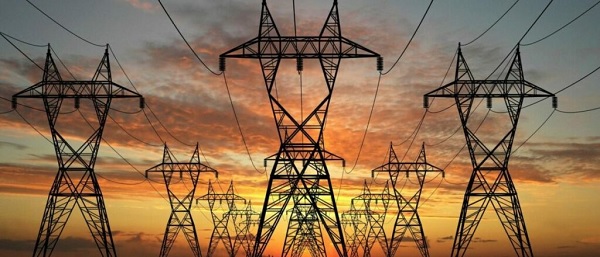 To the detriment of taxpayers and electricity ratepayers, Irvine’s representatives to the Orange County Power Authority (OCPA) — Councilmembers Tammy Kim and Kathleen Treseder — do little more than parrot agency talking points while the City of Irvine spends millions of dollars on questionable clean electricity. OCPA, like many Community Choice Aggregators (CCAs), is loaded with dirty “brown power” deliveries (generated by fossil fuels) that are concealed from the public to protect OCPA’s “green energy” claims.
To the detriment of taxpayers and electricity ratepayers, Irvine’s representatives to the Orange County Power Authority (OCPA) — Councilmembers Tammy Kim and Kathleen Treseder — do little more than parrot agency talking points while the City of Irvine spends millions of dollars on questionable clean electricity. OCPA, like many Community Choice Aggregators (CCAs), is loaded with dirty “brown power” deliveries (generated by fossil fuels) that are concealed from the public to protect OCPA’s “green energy” claims.
The following illustrates the problem:
1. Councilmembers Treseder and Kim naively believe OCPA’s energy contracts reveal actual energy deliveries. During the August 8th City Council meeting, Councilmember Treseder publicly stated: “We can go in and see [on power purchase agreements] what energy is being purchased. So, I feel like that is meeting expectations for transparency.”
Councilmember Tammy Kim added: “We have produced the purchasing power agreements. Councilmember Treseder brought physical stacks of paperwork for everyone to look at.”
Councilmembers Treseder and Kim apparently do not know that power purchase agreements (PPAs) do not tell us what OCPA actually delivers to its customers.
PPAs conceal greenwashing that typically occurs when large amounts of solar power are advertised. Here’s how it works: Consultants need their clients’ energy portfolios to appear “green,” so they buy more (inexpensive) solar power than is needed. Renewable Energy Certificates (RECs) are issued when purchasing any renewable power, including solar. (RECs are akin to a sales receipt.) The excess solar energy is then sold-off — often to other states — but the associated RECs are retained. The consultants then purchase reliable system power (brown power) for nighttime delivery when solar is unavailable. Then, the solar RECs are reported to regulators and ratepayers, represented as delivery of solar energy when system power is actually delivered.
This scheme is similar to switching out the contents from a bottle of fine wine and replacing it with Trader Joe’s “Two Buck Chuck,” and then serving it to your dinner guests under the false narrative that their glass contains the fine wine.
While clearly unethical, this charade persists due to a loophole in energy reporting rules. Settlement statements from California’s electricity grid operator, California Independent System Operator (CAISO), would let us see much of the brown power OCPA delivers to its customers. However, it is unlikely that Treseder’s “stacks of paperwork” included CAISO settlement statements and all energy purchase and energy resale invoices, since OCPA rejected Huntington Beach’s request to review this even though it executed a non-disclosure agreement.
2. Councilmembers Treseder and Kim also believe power content labels represent OCPA’s actual energy content. During an October 8th event, Treseder inaccurately stated that OCPA “has delivered to all four cities — all businesses and residents — 95.5% renewable energy.” And at a City Council meeting, Kim said the power content label “shows OCPA is producing renewable energy,” which is partially true, but not to the extent portrayed by the label.
The truth of the matter is that these power content labels fail to disclose hidden dirty power in OCPA’s products. This point is apparently lost on Councilmembers Treseder and Kim. For example, power content labels for OCPA’s lower tier products (less renewables) — known as Basic Choice and Smart Choice — advertise intermittent and unreliable wind and solar power rather than the underlying dirty power (aka “Unspecified Power”) that is actually delivered. OCPA’s own reports reveal this sleight-of-hand. (See page 2 of the 2022 Power Content Label, shown here.)
Additionally, for OCPA’s “100% Renewable” power content label, OCPA claims its intermittent wind and solar is indeed directly delivered to its ratepayers. To achieve this, OCPA must also secure “resource adequacy” (RA) — typically gas-fired power — which props up and maintains overall electricity grid reliability and combats blackouts while that intermittent energy flows onto the grid. However, OCPA repeatedly fails to comply with its RA statutory requirement, as illustrated by its brazen rejection of RA, which puts California’s power grid in jeopardy.
And, because OCPA surreptitiously siphons RA from “the main pool,” other electricity companies, including Southern California Edison, are penalized because they end up carrying and reporting part of OCPA’s greenhouse gas (GHG) on their own ledgers. All of this calls into question OCPA’s claims that its 100% Renewable energy is actually delivered and actually emits zero GHG.
To worsen matters for the agency’s customers, OCPA’s power content label has no third-party authentication. Are Treseder and Kim aware of this? There will be no independent audit until at least 2026 due to a successful lobbying effort by CCAs in Sacramento that defers audits of new CCAs, including OCPA.
3. Councilmember Treseder undermines herself with a confused account of OCPA’s record, including a “plot twist,” that exposes her absence of fiduciary follow-through. Treseder publicly said: “The statement that OCPA has promised to deliver cleaner electricity at a cheaper price than SoCal Edison is nowhere in the founding documents. There is nowhere that OCPA has committed to that. I don’t know where this assertation comes from. I will say though, as a plot twist, that OCPA is actually delivering that.”
OCPA’s promise of cleaner electricity was based on its “Basic Choice” product being set at 2% cleaner than California’s Renewable Portfolio Standard before OCPA’s business launch, which SCE uses as the target for its basic product offerings. And, OCPA’s promise of lower monthly rates was included in the 2019 Community Choice Energy Feasibility Study and subsequent review by Irvine’s Director of Public Works.
Councilmembers Kim and Treseder fail to achieve the “well informed” standard Treseder requires of her fellow Irvine Councilmembers who question OCPA’s actions. Both Kim and Treseder clearly lack the necessary skills to act as fiduciaries on behalf of Irvine taxpayers and OCPA ratepayers.
Propagating misinformation by running interference for OCPA — while bandying incomplete documents that fail to satisfy needed transparency — is no way to serve the public. The public deserves complete answers to legitimate questions.
- OCPA’s Non-Existent Wind Energy Polluting the Air - July 18, 2024
- OCPA Continues to Mislead Existing & Potential New Customers - March 17, 2024
- OCPA’s Survival Depends on Concealing Documents & Overcharging Electricity Customers - November 23, 2023



